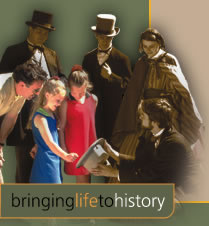Place Description
17 West Street is a wood framed home built for merchant and politician, Jedediah S. Carvell (1832-1894) in 1877. It is one part of what was originally a much larger Second Empire style home. Westbourne was renovated, reoriented and reduced in size throughout its history, but it remains an impressive building. Located on West Street among a number of historic homes, it is in keeping with the heritage ambiance of West Street. The designation encompasses the building's exterior and parcel; it does not include the building's interior.
Why is this place important?
The heritage value of 17 West Street lies in its association with various prominent Charlottetown residents; its remaining Second Empire architectural elements; and its role in supporting the West Street streetscape.
17 West Street or Westbourne, as it was called, was designed by prominent architect, William Critchlow Harris and built in 1877 by Messrs. Benjamin and Thomas Seller for local merchant, Jedediah S. Carvell. The home contained 15 rooms besides a kitchen, scullery, pantries and bathrooms. Hot and cold running water was available in the bedrooms and it was heated with hot air heating. Carvell and his brother began the business, Carvell Brothers, which lasted well into the 20th Century. Not only active in business, Jedediah was also involved in public life serving in a variety of important offices throughout his career including: Mayor of Charlottetown from 1877 until 1878, Senator from 1879 until 1889 and Lieutenant Governor of Prince Edward Island from 1889 until 1894.
As a result of a worldwide economic recession in the late 1870s, Carvell was forced to sell his new home shortly after it was constructed in 1879. A number of people owned it from 1879 until 1915, including William Markett Rayden, prominent merchant and banker, Benjamin Heartz and Lieutenant Governor Frank Richard Heartz. In 1915, Frank R. Heartz renovated Westbourne extensively by removing the large southern wing and verandah and reorienting the home so that the entrance faced the street instead of the water. Later, additions to the first floor were carried out. At some point, the original Mansard roof was replaced by the current hipped roof. However, other Second Empire style elements remain including the elaborate stacked bay windows, the heavy bracketting of the front facade, and the paired doors of the entrance.
The home enjoyed a number of occupants throughout the 20th Century including the Bank of Nova Scotia, James A. Robertson, Gavin Harding and Heber R. Large. Although extensively renovated and reduced in size throughout the years, the home is still a large and attractive home. In an area with a number of large elaborate homes, it helps support the West Street streetscape.
Sources: Heritage Office, City of Charlottetown Planning Department, PO Box 98, Charlottetown, PE C1A 7K2
#0003l
Special Characteristics
The following character-defining elements illustrate the heritage value of 17 West Street:
- The massing of the home
- The hipped roof with bracketing at the eaves
- The hipped dormers
- The size and placement of the windows, particularly the tall windows, the elaborate stacked bay windows of the facade and the dormer windows
- The size and placement of the doors, particularly the paneled main double door of the east side with its transom and side lights, as well as the door on the north east side of the facade with its transom and sidelights
- The decorative mouldings painted in a contrasting colour, including the window and door surrounds, the bracketing at the eaves and on the bays, as well as the mouldings in a floral design on the bays
- The hipped roof canopy porch over the entrance with its pendant decorations
- The size and placement of the chimneys
Other character-defining elements of 17 West Street include:
- The location of the home on West Street
- The home's location on a treed lot on the bank of the Hillsborough River






